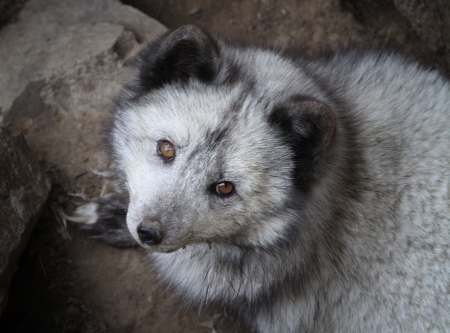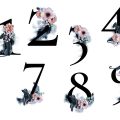Introduction to Animal Omens in British Folklore
Throughout the winding lanes and misty moors of Britain, tales of animal omens have threaded themselves into the very fabric of daily life. Far from being mere relics of a forgotten past, these stories continue to echo across villages, towns, and countryside alike. In British folklore, animals such as birds, foxes, and various wild beasts are not simply part of the landscape—they are seen as messengers, harbingers, or even guardians, shaping cultural practices and superstitions that persist to this day. The way people interpret the sighting of a blackbird at dawn or a fox crossing their path is deeply rooted in centuries-old beliefs that intertwine natural observation with mystical meaning. These traditions have not only influenced rural customs but have also found their place in literature, everyday conversation, and popular culture. As we delve into the world of animal omens in Britain, it becomes clear how these creatures serve as bridges between the mundane and the magical, offering insights into fate, fortune, and the enduring spirit of the British countryside.
Birds of Prophecy: Ravens, Magpies, and Owls
Throughout British folklore, birds have long been regarded as harbingers of fate and fortune. Among the most prominent avian omens are ravens, magpies, and owls—each associated with its own unique symbolism and superstitions. The presence, behaviour, or even the call of these birds can be interpreted as an omen, offering warnings or promises of what is to come.
The Raven: A Messenger Between Worlds
Ravens occupy a particularly significant role in British myth. Historically seen as messengers between the mortal realm and the supernatural, their appearance has often been linked to death or transformation. For example, the continued presence of ravens at the Tower of London is believed to safeguard both the monarchy and the nation itself. This belief has given rise to customs such as keeping a minimum number of ravens within the Tower grounds at all times.
Magpies: Counting for Luck or Sorrow
No bird is more entwined with everyday superstition than the magpie. The famous rhyme “One for sorrow, two for joy…” encapsulates the practice of counting magpies to divine one’s fortune. Seeing a lone magpie is considered unlucky; however, encountering a pair signifies happiness or good news. These beliefs are so ingrained that many Britons will salute a solitary magpie to ward off ill luck.
| Number of Magpies Seen | Traditional Meaning |
|---|---|
| 1 | Sorrow |
| 2 | Joy |
| 3 | A Girl |
| 4 | A Boy |
| 5 | Silver |
| 6 | Gold |
| 7 | A Secret Never to Be Told |
The Owl: Portent of Mystery and Death
The owl’s haunting call at night has inspired both awe and dread across Britain. Traditionally, owls are seen as omens of death or misfortune, especially if heard near ones home after dark. Conversely, their association with wisdom—rooted in classical mythology—has also led to their presence in academic emblems and literary references throughout British culture.
Cultural Echoes in Sayings and Customs
The enduring influence of these avian omens is evident in British sayings such as “Never count your chickens before they’re hatched” and “A bird in the hand is worth two in the bush.” Customs like saluting magpies or respecting ravens at historic sites underscore how deeply these beliefs remain woven into everyday life. These practices not only reflect a reverence for nature but also highlight how folklore continues to inform British attitudes toward fate, luck, and prophecy.
![]()
3. Foxes: Tricksters and Harbingers
Among the creatures that populate British folklore, the fox occupies a unique and complex position. Its presence in stories, proverbs, and local beliefs reflects a dual reputation: both as a cunning trickster and as an omen of significant change or impending misfortune.
The Fox as a Cunning Trickster
Throughout England, Scotland, and Wales, the fox is renowned for its intelligence and resourcefulness. Folk tales often portray Reynard the Fox as a master of deception, outwitting both animals and humans alike. This reputation is embedded in everyday language—phrases such as “sly as a fox” or “foxed again” reflect admiration tinged with wariness towards its cleverness. In rural communities, the fox’s ability to evade huntsmen became legendary, symbolising not just survival but also subversive wit against authority.
The Fox as an Omen
Beyond its trickster aspect, the fox carries deeper symbolic weight in British superstition. Sightings of a fox at unusual times—particularly near homes or villages during daylight—have long been considered portents of change or trouble. In some regions, a fox crossing one’s path was said to foretell bad luck, family discord, or even death. Conversely, there are rare tales where the fox’s sudden appearance signals necessary transformation or opportunity, especially if it appears after a period of stagnation or hardship.
Regional Variations and Symbolic Nuance
The meaning attributed to fox encounters varies by locality. In parts of the West Country, farmers believed that hearing a fox bark at night presaged theft or betrayal within the community. In contrast, Scottish folklore sometimes casts the animal in a more ambiguous light—as both a guardian spirit and a bringer of chaos depending on context and timing.
Cultural Legacy
Today, these layered associations endure in British culture. The image of the fox continues to surface in literature, art, and popular idioms, encapsulating centuries of ambivalence towards this enigmatic creature. Whether seen as a mere thief of chickens or a harbinger of fate’s twists, the fox remains firmly woven into Britain’s tapestry of animal omens.
4. Beasts and Rural Portents: Cats, Hares, and Badgers
The British countryside has long been alive with whispers of omens and portents, many rooted in the everyday encounters rural folk have with local wildlife. Among the most significant are black cats, hares, and badgers—animals whose appearances often signalled far more than mere chance. To understand these beliefs is to glimpse the worldview of Britain’s rural past, where nature’s creatures were woven into the tapestry of fate and fortune.
The Black Cat: Harbinger of Luck or Misfortune?
Perhaps no animal is as divisive in folklore as the black cat. In some parts of Britain, especially in the Midlands and Scotland, a black cat crossing your path was seen as an omen of good fortune—a belief reflected in the tradition of gifting black kittens to brides for luck. Yet elsewhere, particularly in southern England, the same encounter could presage misfortune or even death. This dichotomy reveals how regional beliefs adapted to local customs and anxieties.
Traditional Beliefs about Black Cats
| Region | Omen Interpretation |
|---|---|
| Midlands & Scotland | Good luck; prosperity and happiness ahead |
| Southern England | Bad luck; potential for misfortune or loss |
| Cornwall | Protection from evil spirits if kept as a household pet |
The Hare: A Creature Caught Between Worlds
The hare’s reputation in British folklore is complex. Often associated with witchcraft and transformation, a hare darting across one’s path was rarely ignored by country folk. In some traditions, seeing a hare at dawn indicated impending change—sometimes good, sometimes ill. There were also widespread beliefs that witches could shape-shift into hares to avoid detection, adding an element of supernatural unease to any encounter.
Key Hare Omens
- If a hare crosses your path on May Day morning, expect a year of unpredictable fortune.
- Killing a hare was thought to bring bad luck upon the household—better to let it pass unharmed.
- A hare circling a house foretold illness or death within.
The Badger: Elusive Messenger of Fate
The badger is among Britain’s more secretive mammals, which only added to its mystique. Rare sightings were never taken lightly. In several counties, seeing a badger during daylight hours was considered a warning sign—either of an approaching storm or of personal upheaval. Some rural communities believed that a badger passing near your home was a sign to prepare for unwelcome news or family strife.
Summary Table: Animal Omens in the Countryside
| Animal | Omen/Significance | Typical Regional Associations |
|---|---|---|
| Black Cat | Luck (good or bad) | Varied by region—prosperity in Scotland/Midlands; misfortune in South England |
| Hare | Change, witchcraft, warning of death or luck depending on circumstance | Nationwide; especially strong in East Anglia and Northumberland |
| Badger | Forewarning of trouble or weather changes; omen of strife if seen by day | Common in rural Wales and West Country folklore |
Together, these animals illustrate how British folklore mapped meaning onto everyday encounters with wildlife. Whether interpreted as bearers of luck, omens of doom, or indicators of supernatural activity, their presence in rural life continues to echo through local sayings and superstitions today.
5. Regional Variations Across the United Kingdom
The interpretation of animal omens in British folklore is anything but uniform, with each nation and even individual counties boasting their own distinct beliefs and superstitions. These regional variations are rooted in local history, landscape, and cultural identity, creating a diverse tapestry of prophetic traditions.
England: Black Dogs and Barn Owls
In rural England, the appearance of certain animals has long been associated with impending fate. For instance, the spectral black dog—known as Black Shuck in East Anglia or Padfoot in Yorkshire—is thought to foretell death or misfortune. Meanwhile, the call of a barn owl near one’s home is often regarded as an omen of illness or tragedy. Local sayings such as “When the owl hoots, the night brings news” persist in country villages.
Scotland: Ravens and Red Foxes
Scottish folklore places particular emphasis on birds, especially ravens and crows. In the Highlands, it is believed that a raven circling above indicates a major life change or even serves as a warning from ancestors. The red fox, meanwhile, is seen as a harbinger of luck if spotted at dawn but may signify deception if encountered at dusk. Tales from Aberdeenshire tell of foxes leading travellers to safety—or peril—depending on their behaviour.
Wales: The Prophetic Birdsong
In Wales, birds feature prominently in omens and prophecy. The cuckoo’s first call in spring determines not only the length of summer but also foretells personal fortune for the year ahead. Welsh proverbs such as “Un i chi ac un i mi, dyma’r frân ar y pren” (“One for you and one for me, here’s the crow on the tree”) highlight communal anxieties about sharing both good and bad luck when crows gather near homes.
Northern Ireland: Hares and Other Harbingers
Northern Irish folklore is replete with stories of hares crossing one’s path—an event often interpreted as a sign to postpone travel or important decisions. Local legends recount how hares were sometimes considered witches in disguise. Additionally, magpies are watched closely; a single magpie signals sorrow while two bring joy, echoing the rhyme “One for sorrow, two for joy.”
Local Wisdom Endures
Despite urbanisation and modern scepticism, these regional beliefs endure in everyday speech and annual customs. Whether whispered in farmhouse kitchens or retold in village pubs, animal omens continue to shape local narratives—reminding us that the creatures we encounter still hold powerful symbolic meaning across Britain’s varied landscapes.
6. Animal Omens in Contemporary British Life
While the roots of animal omens lie deep within British folklore, their influence persists—albeit in evolved forms—within modern British culture. This persistence is evident across literature, media, and everyday speech, revealing both a reverence for tradition and an adaptability to contemporary life.
The Literary Echoes of Animal Omens
Contemporary British literature continues to draw on animal symbolism as a narrative device. Authors often employ birds, foxes, and other creatures as harbingers or symbols of fate, blending ancient superstitions with modern themes. For instance, the appearance of a raven might foreshadow doom in a psychological thriller, echoing the folkloric association of corvids with ill-omen. Children’s books, too, reference traditional omens—a magpie’s solitary presence prompting characters to recite “one for sorrow,” perpetuating the old rhyme and its superstitious undertones.
Media Representations and Public Discourse
Animal omens have also found new life in British media. News stories occasionally highlight unusual animal behaviours as portentous: an early sighting of swallows may be interpreted as a sign of an early spring, while reports of urban foxes are discussed not just as urban wildlife, but sometimes as symbols of cunning or adaptability. Television dramas and documentaries frequently allude to these motifs; the BBC’s nature programming might reference folk beliefs when explaining animal habits, subtly reinforcing their cultural resonance.
Everyday Speech and Modern Superstitions
Despite advances in science and rationalism, many Britons still invoke animal omens in casual conversation. Phrases such as “badgering someone” or “as sly as a fox” reveal how deeply embedded these associations remain in the language. The magpie rhyme—“One for sorrow, two for joy”—is commonly recited upon seeing these birds, reflecting a blend of superstition and playful tradition. Even those who dismiss literal belief in omens may touch wood or salute a lone magpie out of habit, demonstrating the persistence of ritual.
The Adaptation of Old Beliefs
The survival of animal omens is not merely nostalgic; it reflects a broader human tendency to find meaning in the natural world. In contemporary Britain, these traditions have adapted to fit secular sensibilities—becoming metaphors for luck, cautionary tales about nature’s unpredictability, or simply markers of national identity. Whether referenced humorously or with genuine conviction, animal omens continue to shape how people interpret everyday events.
Cultural Continuity Amid Change
Ultimately, the enduring presence of animal omens in British life underscores both continuity and change: old beliefs are neither wholly abandoned nor unquestioningly preserved. Instead, they are reinterpreted—woven into literature, broadcast through media, and echoed in speech—to meet the needs and sensibilities of modern society. Thus, while foxes prowl city streets and magpies perch on suburban fences, their symbolic significance remains very much alive—testament to Britain’s living folklore tradition.


